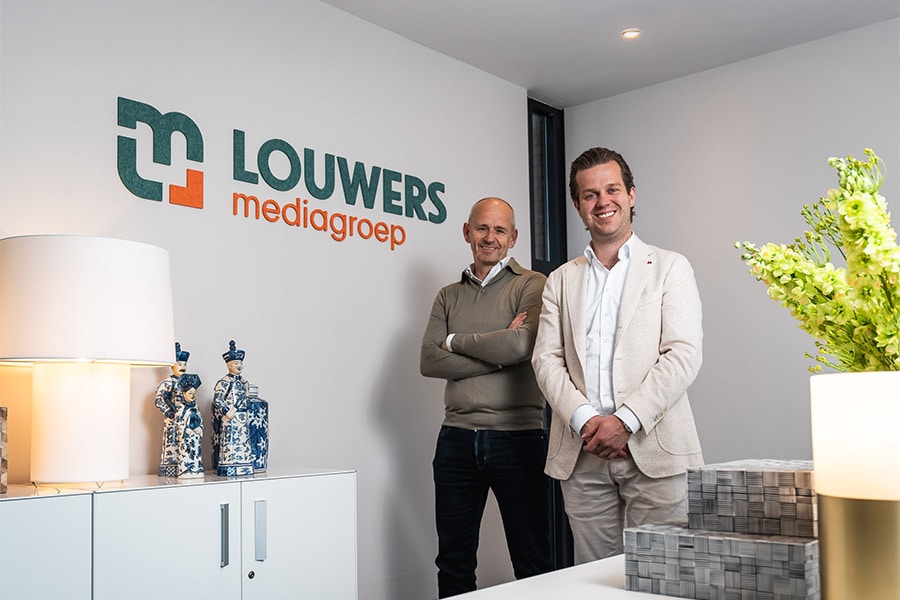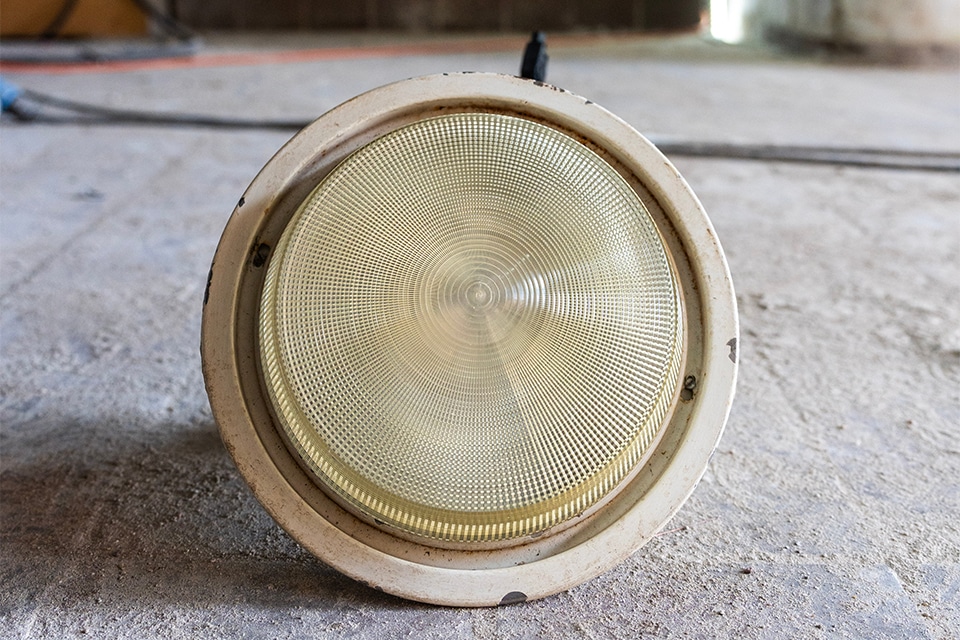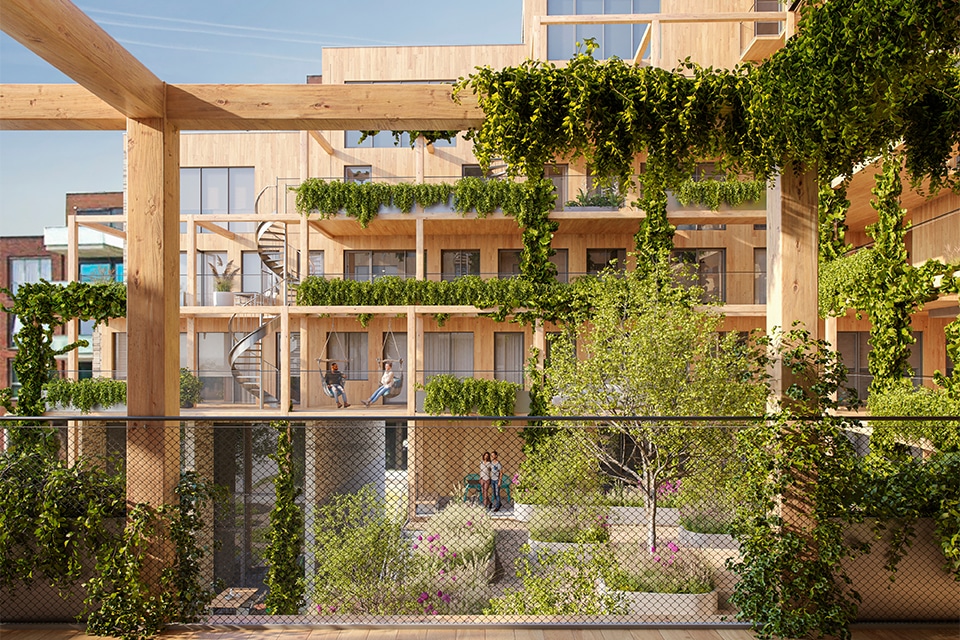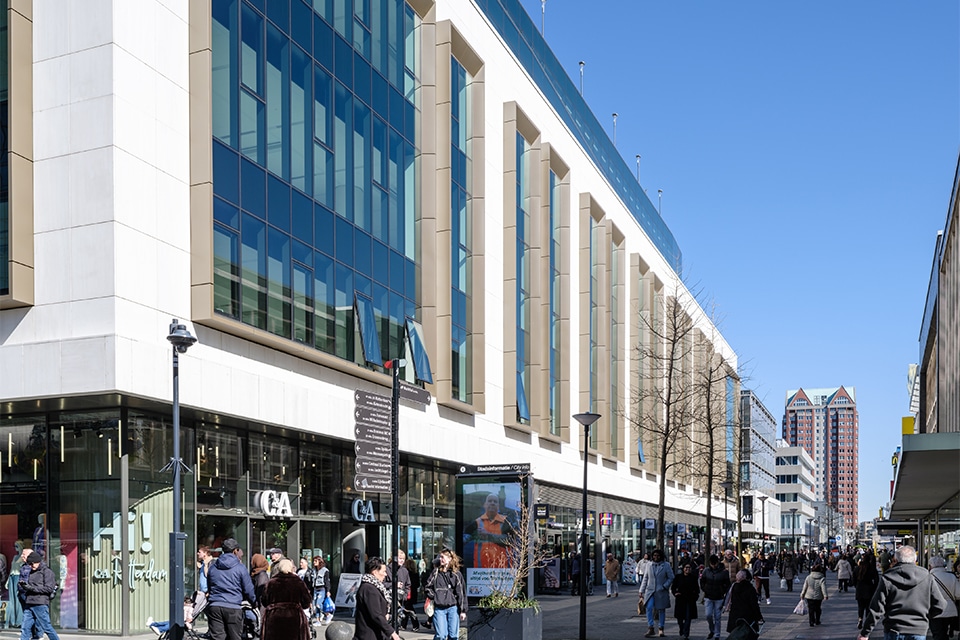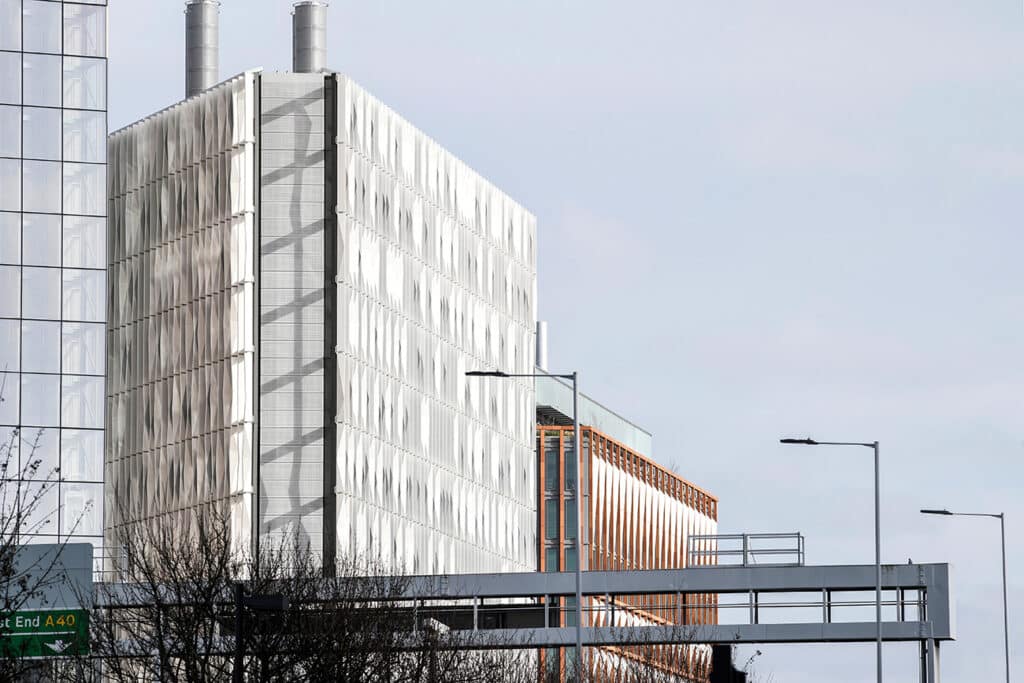
Starting shot to 100% cement-free concrete
Sir Michael Uren Hub in London
With the opening of the Sir Michael Uren Hub in 2020, Imperial College London's (ICL) White City Campus has received a boost. The state-of-the-art laboratory brings together medicine and engineering with the aim of advancing the treatment of musculoskeletal disorders and hip replacement, public health and neurological diseases such as dementia. The building houses a 160-seat auditorium, social areas, clean rooms and futuristic outpatient clinics and is named after its largest donor. After graduating from ICL in 1943, alumnus Sir Michael Uren donated a whopping £40 million to create the 13-story building. Wherever possible, his technical cement substitute GGBS was used. For example, for the precast concrete façade fins, produced by Loveld of Aalter.
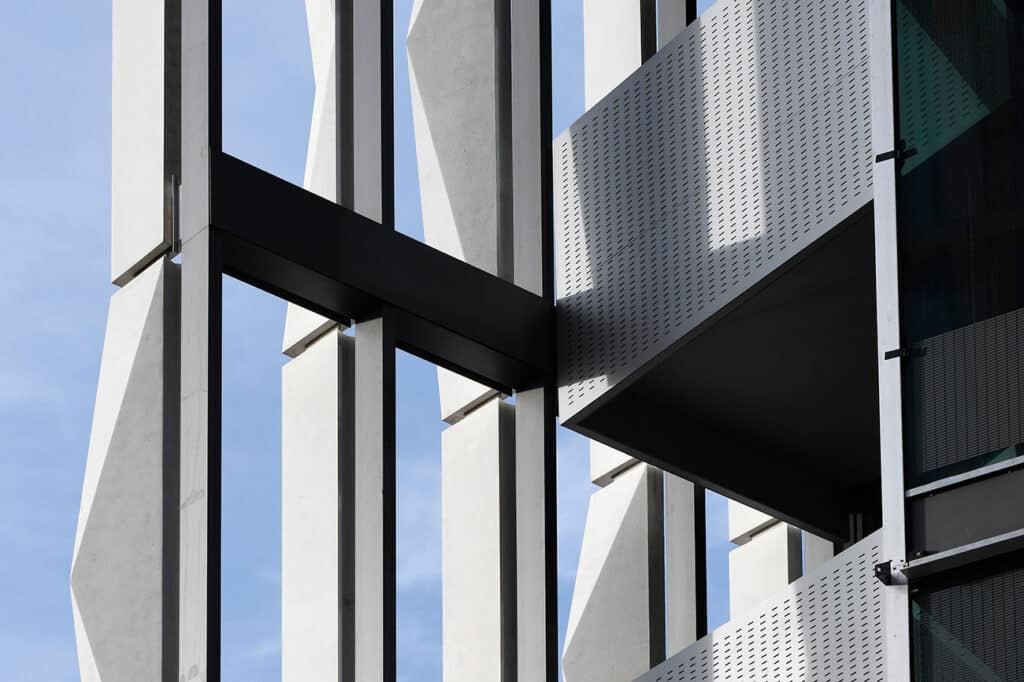
Sir Michael Uren's company (Civil and Marine Ltd) discovered a waste byproduct from coal-fired power plants - ground granulated blast furnace slag (GGBS) - and exploited its potential as a sustainable substitute for cement. A unique feature of GGBS is that it retains the strength of concrete while producing only one-fifteenth the emissions. As a result, the CO2-emissions from the ICL laboratory reduced significantly. The arrow-shaped medical facility has been given a concrete frame structure. A glass facade with three-dimensional fins in architectural concrete provides excellent sun protection and completes the aesthetic design.
Less cement, less CO2-emissions
The precast concrete fins were engineered and produced by Loveld of Aalter, which took its first steps in the transition to 100% energy-friendly concrete production with the construction of the Sir Michael Uren Hub. "As an organization, we have been exploring opportunities to make our production and manufacturing processes more sustainable for several years," says Vincent Termote, Project Sales & Development Manager at Loveld. "The main goal here is to reduce our CO2-emissions as much as possible. One of the key ingredients in our products is cement, which is a heavy CO2-footprint. Globally, some four billion tons of cement are used annually, accounting for some 8% of the total CO2-emissions. Much of this is caused by cement production itself, where ground limestone is heated to as much as 2,000°C to separate the cement base (calcium hydroxide) from the carbon. When the carbon comes in contact with oxygen, CO2 formed that goes directly into the atmosphere. One hundred tons of limestone thus produces 56 tons of calcium hydroxide and 44 tons of CO2 up. The heating process, transportation and mining of the limestone account for the rest of the CO2-footprint. We see it as our responsibility to reduce these emissions significantly. For example, by reducing the cement quantity in our concrete."
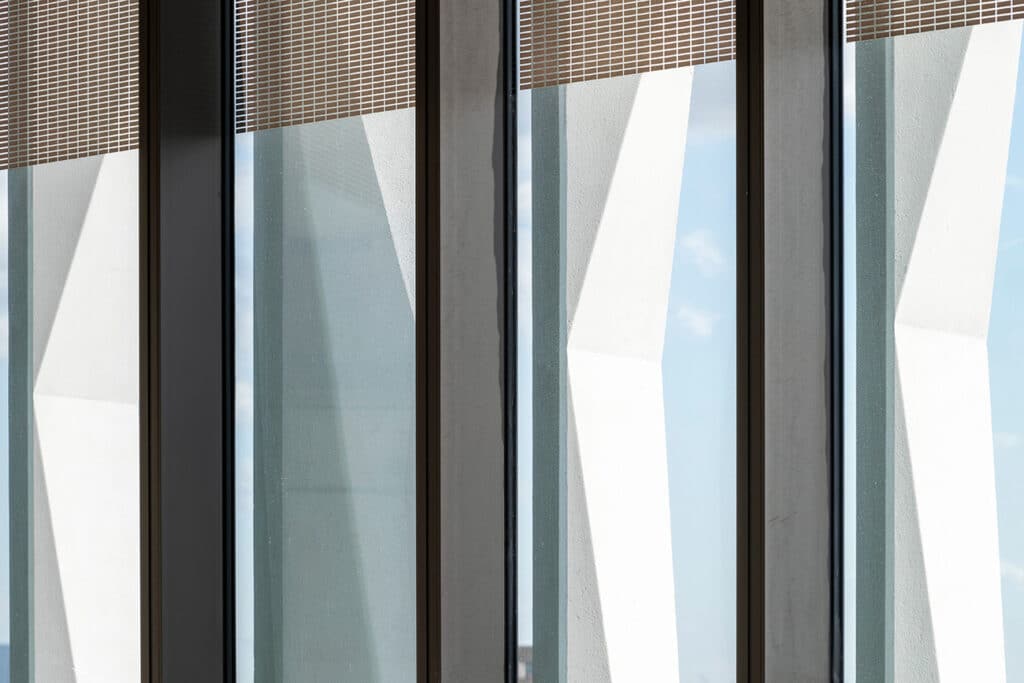
Reduction of 53 tons of CO2
"The reduction is only possible, by replacing the cement with technical alternatives," explains Termote. "GGBS is very popular in this context. We, too, have embraced this development. We conducted several laboratory tests with blast furnace slag, after which the Sir Michael Uren Hub was designated as a pilot project for effective production with blast furnace slag. We started an intensive research project especially for this project, because blast furnace slag reacts differently than conventional cement. For example, strength development, color formation and the amount and method of application differ. Especially for the fins, we formulated a concrete mixture in which the blast furnace slag was added by shovel and by hand." The single-shell vertical fins were produced with 50% GGBS, he says. "This achieved emissions of 53 tons (40%) of CO2 avoided." A total of 1,300 fins were produced and delivered, in seven basic shapes, applied in various combinations. This allowed a beautiful facade to be realized with limited production impact."
Gray concrete with 100% blast furnace slag
The application of GGBS in the Sir Michael Uren Hub proved so successful that Loveld began exploring the possibilities further in collaboration with ResourceFull (KU Leuven). This has led to interesting new developments, says Termote. "For example, we now produce all our gray concrete mixtures with 50% blast furnace slag. So only 50% classic cement is still involved here." To further live up to the European Green Deal ambition, Loveld is also highly committed to making its business processes more sustainable. From the electrification of its vehicle fleet to the recycling of water and the generation of solar energy. These efforts have recently resulted in a CO2-performance ladder level 3 rating, but in the coming years Loveld would like to reach even higher. For example, through a reduction plan and targeted measures, the Aalter-based prefabricated façade specialist ultimately wants to achieve an additional CO2-reduction of 35% by 2026 and full CO2-neutrality by 2030.
